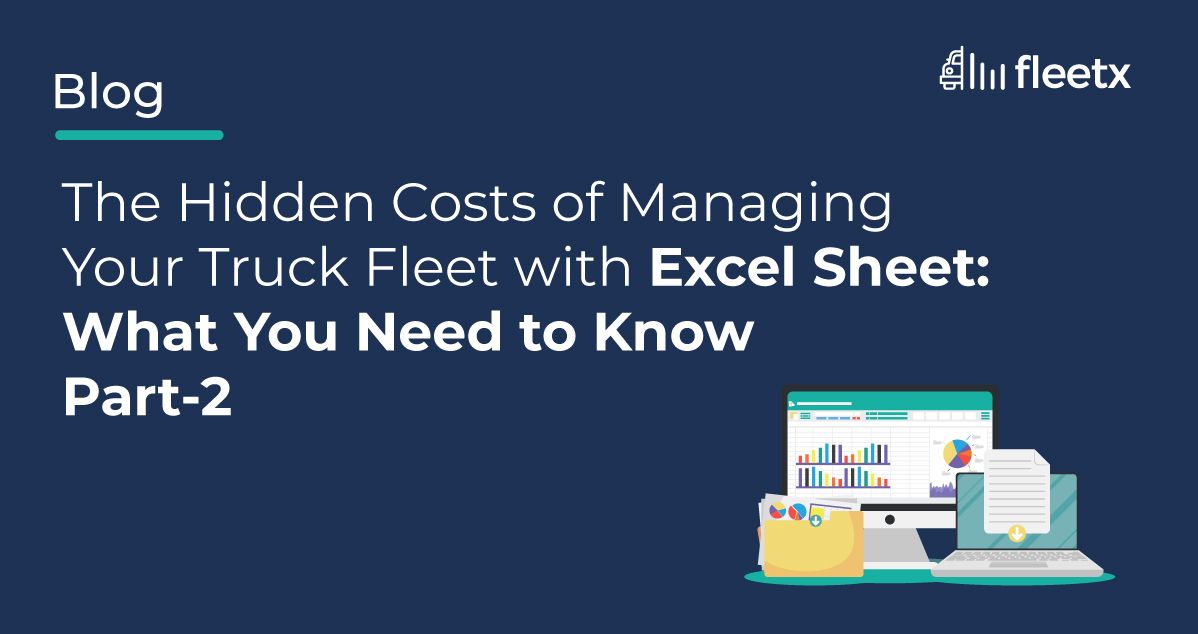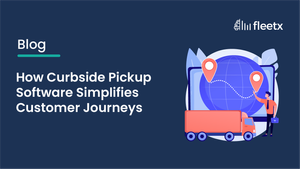
Managing a truck fleet is no easy task, involving keeping track of multiple vehicles, drivers, and routes while ensuring compliance with regulations and safety standards. In India, Excel sheets are a popular tool for fleet management, offering easy availability and user-friendliness. However, while they may seem cost-effective and convenient, using Excel sheets to manage a fleet can have hidden costs that impact a business's bottom line. This article explores these costs and their impact, discusses the limitations of Excel sheets for fleet management, introduces popular software solutions, and highlights the potential benefits and cost savings of transitioning to a modern solution. By the end, readers will have a roadmap for successful implementation of a more efficient fleet management system.
Some popular spreadsheets for managing truck fleet
Some popular spreadsheets used for managing truck fleets on Excel include:
- Maintenance Log: This spreadsheet is used to track the maintenance history of each vehicle in the fleet, including repair work, parts replaced, and scheduled maintenance. This information can help fleet managers identify maintenance trends and plan preventative maintenance schedules to reduce breakdowns.
- Fuel Log: This spreadsheet tracks fuel consumption for each vehicle in the fleet, including fuel type, date, location, and cost. By analysing this data, fleet managers can identify opportunities to reduce fuel costs, such as identifying drivers with poor fuel efficiency or identifying routes that are less fuel-efficient.
- Driver Behavior Log: This spreadsheet tracks driver behaviour, including speeding, harsh braking, and idling. By analysing this data, fleet managers can identify drivers who may need additional training or coaching to improve their driving behaviour, which can improve safety and reduce maintenance costs.
- Route Planning Spreadsheet: This spreadsheet is used to plan and track routes for each vehicle in the fleet, including planned stops, delivery times, and distance travelled. By analysing this data, fleet managers can optimise routes to reduce travel time, fuel consumption, and wear and tear on vehicles.
- Inventory Management Spreadsheet: This spreadsheet tracks inventory levels for spare parts and other supplies used in fleet maintenance. By tracking inventory levels, fleet managers can ensure that they always have the necessary parts on hand to minimise downtime and reduce maintenance costs.
Why Excel might not be the best fit to manage your fleet
Excel sheets are a popular tool for managing a truck fleet in India, primarily because they are easily available and relatively easy to use. Many businesses use Excel sheets to maintain records of their vehicle inventory, maintenance schedules, fuel consumption, and other critical data.
The importance of understanding the hidden costs associated with managing a truck fleet with Excel sheets cannot be overstated. First and foremost, Excel sheets require manual data entry, which can be time-consuming and prone to errors. Fleet managers have to spend significant time entering data and verifying its accuracy, which can take away from other important tasks. Additionally, manual data entry can lead to inconsistencies and inaccuracies in the data, which can have significant consequences for the business.
Another significant limitation of Excel sheets is that they do not provide real-time data. This means that fleet managers have to rely on manual updates to keep track of vehicle locations, driver behaviour, fuel consumption, and other critical metrics. This can make it difficult to monitor the fleet effectively and respond to issues quickly. For instance, if a vehicle breaks down or is involved in an accident, fleet managers may not find out about it until hours or even days later, which can lead to significant delays and expenses.
Moreover, Excel sheets have limited functionality compared to modern fleet management software solutions. For example, Excel sheets cannot provide automated alerts or notifications for vehicle maintenance, driver behaviour, or fuel consumption. They also cannot provide predictive analytics or machine learning algorithms to help fleet managers make data-driven decisions.
In summary, while Excel sheets are a common tool for managing truck fleets in India, they have several limitations that can lead to hidden costs and inefficiencies. Fleet managers must spend significant time manually entering and verifying data, and the lack of real-time data can make it difficult to monitor the fleet effectively. Additionally, the limited functionality of Excel sheets compared to modern fleet management software solutions can lead to missed opportunities and suboptimal decision-making.
Understanding hidden cost with data
Let's assume a company manages a fleet of 50 trucks and uses Excel sheets to track maintenance, fuel consumption, and driver behaviour. Each month, the fleet manager spends 20 hours manually entering and verifying data in Excel sheets. The average hourly rate for the fleet manager is INR 500.
20 hours/month * INR 500/hour = INR 10,000/month
This means that the company is spending INR 10,000 per month on manual data entry alone. Over the course of a year, this adds up to INR 120,000.
Although it is extremely difficult to ascertain absolute numbers when it comes to losses or cost due to many variables and factors at play, let’s make some general assumptions based on approximate data to make a better case for fleet automation and understanding the true hidden cost associated with manually managing a fleet. The assumptions are as follow:
- The average distance covered by a truck in our case is 96,000 kms annually or 8000 kms monthly so for 10 trucks, assuming 9 trucks are engaged at any given point with 1 in repair, the fleet would cover a distance of roughly 96,000 x 9 or 864,000 kms annually or 72,000 kms monthly.
- The current diesel rate being Rs 90 per litre and assuming it remains unchanged for a year between April 2023 and March 2024.
- Average truck mileage with a Full-Truck Load (FTL) in India being 2 km per litre.
- 10 drivers are employed by the transporter with a salary of 22,500 per month (overall).
- 20 more workers for loading, unloading and other fleet management related activities at the estimated cost of Rs 10,000 each per month. For 20 workers, the company would incur Rs 20,00,000.
- We assume one vehicle breakdown a month at 50,000 per breakdown or 50,000 x 1 x 12 = Rs 600,000 plus an additional Rs 200,000 for other repairs, making it 800,000 being spent on maintenance.
- Assuming the loss due to fuel theft to be 10% of the annual fuel cost.
Now let's consider the cost of missed opportunities. Without real-time data and automated alerts, the fleet manager may miss opportunities to reduce fuel costs, prevent breakdowns, and improve driver safety.
Let's assume that by using a more modern fleet management solution, the company could reduce fuel costs by 5-7% (6% on average) and prevent 1 breakdown per month. Additionally, fuel theft can be significantly brought down from the current level of 10% to 5% of the total fuel consumption.
By using a Fleet Management System (TMS), several of the processes that are currently handled by fleet managers can be automated. As a result, manual labour used for making spreadsheets can be done through the software, thus eliminating the need cost spent on contracting for updating spreadsheets.
Using a Schedule and Routing software, the transporter can also reduce the excess labour employed by making the process of loading and unloading more efficient.
When you add up the hidden costs of manual data entry and the potential cost savings of using a more modern fleet management solution, it becomes clear that Excel sheet-based fleet management can have a significant impact on a company's bottom line.
Conclusion
When it comes to managing a fleet of trucks, using Excel sheets might seem like a no-brainer. They're cheap, easy to use, and readily available - just like instant noodles. But just like instant noodles, using Excel sheets for fleet management can have hidden costs that leave a bad taste in your mouth. From manual data entry to missed opportunities, Excel sheets can lead to inefficiencies that could leave your fleet running on fumes. So, if you want your fleet to be firing on all cylinders, it might be time to trade in your spreadsheets for a more modern solution.







